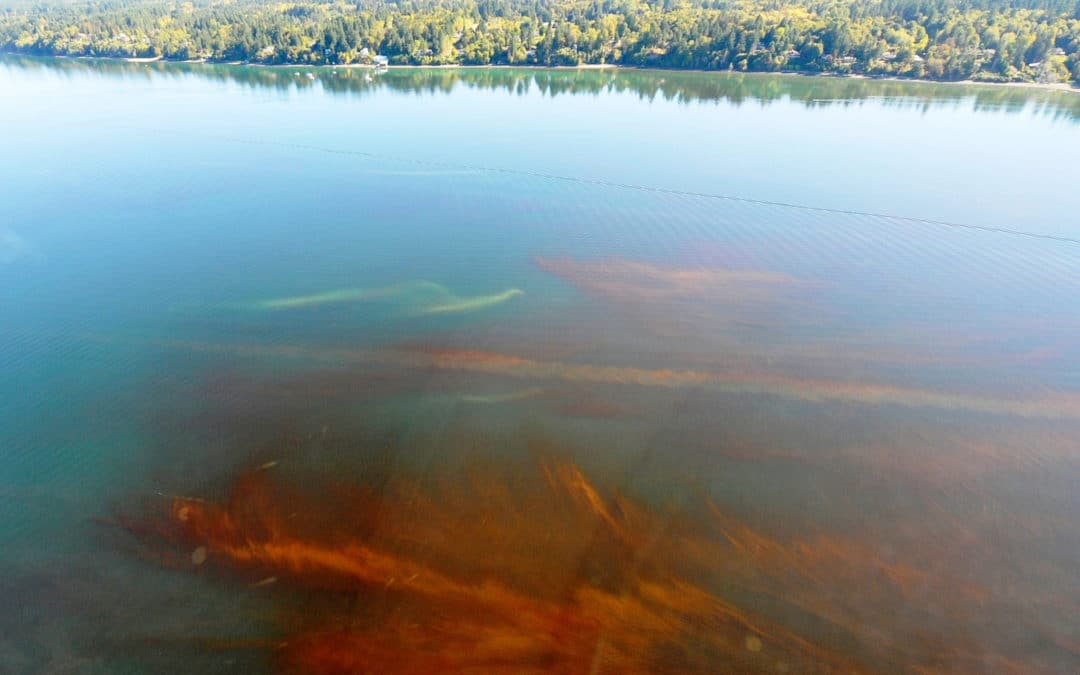NWEA has submitted a petition for rulemaking to the Washington Department of Ecology that seeks to control nitrogen pollution from sewage discharges into Puget Sound. The demand for a TMDL clean-up plan is contained in a formal 77-page petition that requests Ecology drastically reduce nitrogen pollution flowing from cities and towns into the Sound where it is causing unsafe levels of dissolved oxygen in the water, widespread nuisance algal blooms, and food web changes. In the petition, NWEA accuses Ecology of “playing with words” and “hiding behind a smokescreen of meaningless platitudes while deliberately deceiving the public as to its legal obligations under the Clean Water Act.”
The clean-up plan sought by NWEA’s petition to Ecology is called a Total Maximum Daily Load or “TMDL.” The Clean Water Act requires TMDLs for waters that violate water quality standards. Ecology studies have repeatedly shown that nitrogen pollution primarily from sewage plant discharges is violating water quality standards in Puget Sound. Federal law also requires that all pollution discharge permits comply with the pollution limits set out in TMDLs.
In lieu of committing to developing the required TMDL, Ecology recently proposed what it calls the “Puget Sound Nutrient Source Reduction Project,” which its website says will “work with partners and stakeholders to develop meaningful, holistic solutions for nutrient reduction and water quality improvement.” That’s sounds warm and fuzzy but it’s well short of what the Clean Water Act requires, which are mandatory pollution controls. In a recent meeting, Ecology declined to state whether its project will include the required TMDL clean-up plan or even when it might decide whether to develop a TMDL.
Earlier this year, NWEA submitted a petition to remove Washington’s legal authority to issue discharge permits to the U.S. Environmental Protection Agency (EPA) because, as Ecology waffles, it continues to issue discharge permits to nitrogen sources as if nothing is wrong.
In the opening pages of the petition, NWEA observes that “Ecology’s failure to develop a TMDL pollution budget and to control discharges to Puget Sound from wastewater plants stands in stark contrast to the efforts of other states to protect similarly polluted marine waters. For example, the 2001 Long Island Sound Nitrogen TMDL, developed to address increased algal blooms and depressed dissolved oxygen, had by 2009 reduced nitrogen loading by 25 percent from 1990 baseline levels. By 2016, the TMDL had cut nitrogen loads from 106 wastewater plants in Connecticut and New York by 57 percent. With the exception of actions by a few forward-thinking local governments, no such nitrogen reductions are underway in the Puget Sound region because Ecology has failed to develop and implement a TMDL and simultaneously refused to issue permits with nitrogen controls.”
NWEA’s petition was filed under a provision of state law that allows citizens to seek new or revised rules. The law gives Ecology 60 days in which to respond to NWEA’s petition.

